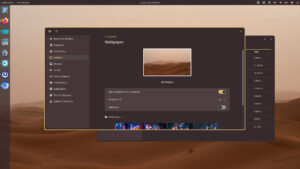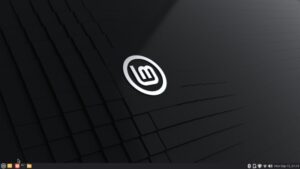I remember when I dove into Linux at full tilt boogie. It was 2004. Nickelback could still be found in the top 10 charts, The Boston Red Sox broke the Curse of the Bambino and wireless support in Linux absolutely sucked. What a long way we’ve come. So these days, when people gripe about this or that not working in Linux, most of those complaints seem almost trivial.
Except when they are not.
I have the absolute privilege of introducing the Next Amazing Generation to Linux. The generation that will cure diabetes. The generation that will put the first human footprint on Mars. The generation that will turn many forms of cancer into an annoyance instead of a death sentence. Well, not the whole generation of course, but a small selection of that generation.
There are some extremely loud critics of Linux as a desktop operating system. They deride it as a hobbyist endeavor and enjoy doing so at every available opportunity. The truth is, much of the world’s computing population turn to desktop Linux to escape the cost and confines of Microsoft Windows. You can troll all you want, but facts are facts.
Our Reglue Kids are no exception. In over 1600 installs, Reglue has learned that kids have absolutely no problem learning and using Linux. We’re talking 12 year old kids here. Often, adults we assist complain about how hard Linux is. It’s then that I offer to have one of our 12 year olds contact them and provide individual tech support.
That’s not to say that desktop Linux isn’t without problems. There are some things that need fixing.
We use a modified version of Mint KDE for our Reglue computers. That being the environment in which I work, it’s that environment in which I am most familiar. My complaints don’t center on Linux Mint KDE, however, but represent the depth and types of problems users face release after release, regardless of the distro or DE. These problems are especially daunting to new users, no matter what their experience or skill level may be.
Let me address a problem way too many of our kids encounter when installing our modified system on another computer.
The fonts are way to big.
Since at least the Maya 13 release we’ve had fits with the Nvidia driver and fonts in KDE. Sure the recommended driver installs fine, but upon the mandatory reboot, all is not well in Linuxland. While the actual desktop and the bottom panel display properly, anything that has anything to do with fonts is wonky. They are huge.
I’d love to provide you with a screenshot, but it seems that the screenshot sees everything as being hunky-dory. The screenshot may show everything as being normal but in real time, every word and every font is screaming at you. Even the clock at the end of the panel takes up a quarter of the space the panel offers.
I spent an inordinate amount of time trying to fix this. My search for “Nvidia large fonts” and other such search terms were worthless on the Mint forums, that search string turning up mostly irrelevant results. Finally, and after digging around with Google search, I found the fix. Ironically, it was posted in the Linux Mint forums. Go figure. It was an extraordinary easy fix.
Set fonts to force a DPI of 96.

I hope the king of Linux trolls, Rocklover Lovelace, doesn’t get wind of this. He’ll milk this one for a year or more.
And yeah, I’m sure someone will comment, “Well gee Ken, I don’t have that problem…” To which I would respond, "Well gee commenter, I guess it doesn’t suck to be you.”
For the dozens of kids that have contacted us about this problem, it most certainly sucks. This is one of the problems/reasons people give for deciding that Linux sucks. Look…don’t get me wrong. KDE is a beautiful and fantastically flexible desktop environment. After using KDE for a year, when I go into other partitions with other desktops installed, it feels…I dunno, I suppose “incomplete” would describe it best.
After the KDE 4.0 debacle I wrote KDE off as a lost cause. Only in the past year have I rediscovered just how good KDE is, but that doesn’t excuse a 9 year old bug, and possibly a show-stopping bug from being ignored. Imagine with me for a moment. Your buddy tells you how great Linux is and he gives you a disk to use and install. Since you are tired of the horse crap Microsoft has been feeding you for two decades, you decide to do something about it.
Everything looks great as you evaluate the live version, so you take a deep breath and follow your friend’s installation instructions. You feel like Neil Armstrong, Jim Bridger and Erik the Red all rolled into one great explorer.
Until you reboot. Then you begin to feel more like like George Donner…
I can’t and I won’t blame Clem Lefebvre or the Mint KDE development staff for this problem. They wouldn’t be the first developers to submit a glaring bug only to be ignored for years. And while this is only one example of problems within the Linuxshpere, it is a strong indicator of even greater problems.
It’s been suggested to me that if KDE or any other project were developed by paid developers, problems like this would not exist. Yeah, that’s probably true, but if fishes were wishes…I don’t see that happening any time soon.
What I will do is investigate to see if this bug can be fixed via a bounty. I will offer up whatever I can scrape together and see if someone on the KDE team wants to tackle it. This bug in particular has been a pain in the keister for myself and some of the Reglue volunteers who help our kids with system problems. We will report back here on what happens with the bounty.
In the short term we are fixing this immediately on all outgoing Reglue computers. But when our kids do installs on other machines, this becomes a problem for many.
And sure, other little things exist that drive the Linux collective crazy. I don’t care how many times I fix it in the settings, my spell checker consistently goes back to the British spelling. It wants me to type “endeavor” as “endeavour,” “favor” as “favour” and…well, you get the idea. I don’t know how easy that would be to fix but I suppose people much smarter then myself can answer that.
And please don’t suggest that I write a script for it. I was very proud to discover that others in the Bash scripting community referred to me as The General…until I found out they were using that for the shortened title “general parsing error.”
Actually, it’s nice to be able to pick nits instead of simply writing Linux off as a desktop replacement for Windows. Linux as a desktop environment has become a no brainer for those able to explore their options. Some simply cannot or will not and that’s fine.
There was a time when only the most determined and geeky of us would consider attempting to install Linux, not to mention use it daily. But now, millions of us worldwide have come to rely upon and improve desktop Linux…including 12 year old kids, one of whom will invent and develop transparent aluminum. Beam me up.
Now if someone could only tackle the insane way some of us name our Linux/Free Software titles…
Ken Starks is the founder of the Helios Project and Reglue, which for 20 years provided refurbished older computers running Linux to disadvantaged school kids, as well as providing digital help for senior citizens, in the Austin, Texas area. He was a columnist for FOSS Force from 2013-2016, and remains part of our family. Follow him on Twitter: @Reglue











For me, the default is en-US. I have to download the en-GB translations on every install/upgrade.
Swap places?
Regards
Richard
For me I found Linux to be the breath of fresh air I was needing to escape the world of “Windows NT / 2000”. I have since that time helped to “convert” my mother (almost 70 yrs old!) my oldest sister….my younger brothers…my youngest brothers wife…my uncle…his three kids..and wife…my nephews….and plenty of other people who might not have known about Linux ecept through the Android experience. SInce then I’ve watched these same people…who were either die-hard Windows users…or else Apple fan-boys….change their way of thinking….the way they use their computers and laptops…and even what they have to say about Linux! So don’t despair “Sir Ken”….there’s someone out there who will be more than willing ot look into and fix the bugs you speak of. And this in turn will allow Linux to get even more exposure as that person (or persons!) will have to reach out to others,…and they may have to inquire with others and so on and so on. I myself…..as old as I am, will still be trying to improve my skills with writing scripts for Linux…..using Python, and I hope to even get my LPIC’s and (possibly?) an RHCE certification. SO while our generation is on it’s way intot the twilight years…the next generation is just bursting at the seams with talent! I have a 14 year old son who’s ALREADY installed Fedora Linux on his laptop and knows hisway arouns a command terminal….he might go on to create some very important piece of code / software for Linux that comes standard with every distro…who knows? SO don’t worry too much about that bug, it’ll get “handled” eventually!
> Since at least the Maya 13 release we’ve had fits with the Nvidia driver and fonts in KDE.
Ken, it seems to be an X issue:
https://bugs.launchpad.net/ubuntu/+source/xorg-server/+bug/589485
I usually edit xorg.conf and add a DisplaySize option to force everything to normal size. I think this is important for previewing pages at real size (100%) in Libreoffice, too. It goes like this:
DisplaySize 270 338
(sizes in millimeters)
In KDE, as you point out, there’s a setting to fix the DPI count and force all windows to a specific density. Try 72 or 150 for funny results.
> Set fonts to force a DPI of 96.
Firefox (and Chromium, it seems) always use 96 DPI for all rendered text. There’s a setting in Firefox to adjust that, but it involves a multiplying factor (say “1.2”) which will make fonts bigger. It doesn’t work well in many sites — in my experience. Instead, I ended up using an extension called “Default Full Zoom Level”, which can remember zoom factors for specific sites. It’s quite unobtrusive — one of the most flattering adjectives I can say about a product (offtopic, but you may want to look at the most useful “Clear Fields” and “Flashblock” extensions, too).
> The bug exists and it has existed since…wait, you have to be kidding me. Really? This bug has existed since 2005?
Frankly, IMHO, setting everything all the time to 96 dpi is a bug, too. You can use this site, DPI Calculator, to get an idea about what the DPI setting should be:
https://www.sven.de/dpi/
> After using KDE for a year, when I go into other partitions with other desktops installed, it feels…I dunno, I suppose “incomplete” would describe it best.
I’d use the word “powerless” — that’s also how I felt when I could not set 89 dpi for my monitor at work. Windows wouldn’t accept less than 96.
> Since you are tired of the horse crap Microsoft has been feeding you for two decades, you decide to do something about it.
The problem with Windows is that you can’t do anything when you face trouble.
The problem with Linux is that you have to do something when you face trouble.
I think unbothered (“practical”) folks will like best Windows, while tweaking (“unreasonable”) people will prefer Linux.
> It’s been suggested to me that if KDE or any other project were developed by paid developers, problems like this would not exist. Yeah, that’s probably true, but if fishes were wishes…
Best phrase about that I’ve seen is:
An amateur built the ark; professionals built the Titanic.
Think about who did great things in IT like Jobs and Wozniak — certainly amateurs at the age they worked in their garage. As a professional, I have a lot of fires to put out and little time to dream… I imagine other guys, as good or better than me, are also overwhelmed by their professional lives.
> In the short term we are fixing this immediately on all outgoing Reglue computers. But when our kids do installs on other machines, this becomes a problem for many.
At work, there are some batch commands executed after logon like things which are dependent on which user is logged. It would be nice to be able to change KDE settings in “.bashrc”. It would be nice to have an export option to get a script file to be copied onto several machines and tweak several KDE at once. This is not equal to copying KDE’s config files in my view.
Those at bigger Linux deployments most certainly will have done that already.
> And sure, other little things exist that drive the Linux collective crazy.
At the moment, for a 3-year old kid, I had to disable “desktop switching” with the mousewheel over a desktop empty area, “task switching” on the panel’s task manager (I had to remove the task manager and resort to exclusively Alt-TAB task changing!), shading of a window with the mousewheel over the title bar (nice but very confusing), showing open windows by moving to a screen corner, and have the panel set on Autohide — the kid discovered he can drag things from the panel to the desktop, and vice versa, at random. Boy, kids at certain age really like to “see the circus catch fire”, like we say in Brazil. I still don’t know what more I’ll have yet to tweak for him, but it’s certain that what’s good for him is entirely different from what’s good for me (and generally speaking for more advanced users). That’s why neither Windows nor OS X work well for everyone.
> I don’t care how many times I fix it in the settings, my spell checker consistently goes back to the British spelling. It wants me to type “endeavor” as “endeavour,” “favor” as “favour” and…well, you get the idea.
Why not learning real English and get done with that? Hehehe, just kidding. It’s just like the situation between Brazil and Portugal — e.g. “exato” and “exacto”.
I too feel the pain: I love single-click but KDE once in a Blue Moon reverts to the dreadful Windows-like double-click default. I guess changing some permissions might solve that. Do KDE config files have an “include” command?
Now, this is a major localization problem. I couldn’t use at least one distro because they didn’t provide a Brazilian-Portuguese option. Lots of distributions only offer their native language (often with unreadable characters), English and possibly Spanish. Though I can use English, the rest of my family cannot.
> The General… short for “general parsing error.”
Hahaha… cruel, but funny.
> Linux as a desktop environment has become a no brainer for those able to explore their options. Some simply cannot or will not and that’s fine.
This ^. My 3-year old will eventually deal with those Linux niceties; but now he has a lot to learn — and a lot to forget. I bet someone already found (and posted) good tweaks for toddlers… and I know, I know, it’s not just computers. He’s having a lot of normal playing to grow up healthy. I just found funny when he wanted to slide the image on the TV just like one does on a smartphone.
> Now if someone could only tackle the insane way some of us name our Linux/Free Software titles…
This guy agrees with you on that:
http://www.geek.com/xyzcomputing/linuxs-difficulty-with-names-571357/
I actually like the names. They can carry some deep or amusing idea, or even a play on words. I also usually cannot understand names double meaning like “Ogle” and thus I don’t suffer as much as native speakers. I even didn’t know what GIMP meant until some people started complaining. I don’t know… is getting a new name reason enough for a fork? 8-/
But certain names are great like Enlightenment or Ubuntu, which evokes what’s best in us. Some names like Firefox aren’t that good, but its original version (Phoenix) meant something that would be born again from its very own ashes. A perfect fit for Netscape.
After Navigator, Explorer, Commander and other heroic names, it was nice to have a Konqueror — even though the pronunciation is not so impressive.
Asterisk gives a visual idea of an interconnection point. Great naming IMHO.
Even Windows got some good names (like Nero, for instance). But Linux people, being freer, can avoid names like “Windows Explorer”. Just reading it feels somewhat demotivating.
Well Ken, as much as I respect you, I have to say that if I have a font problem the first place I’d go to try and solve it is the Fonts section of the control center, not Google…
That said, I know I’m a techie and probably what seems natural/obvious to me is not for someone who’s new to Linux o computers in general, and probably that’s why it’s sometimes hard for me to get in “other people’s shoes” to try to help them.
And to be fair, I usually feel as lost in the rare ocasions in which I have to debug a Windows problem 🙂
About this problem, I’m curious, does it happen only with Nvidia’s propietary drivers or also with th open source one?
Anyway, I hope you can find someone who’ll be willing to look at this bug and fix it fo good.
Ans also, if you file a bug report in KDE’s bugtracker or know a bug number, please let us know so we can vote it up.
Re: Sven’s DPI calculator: My laptop is 1920x1080x15.6 inches. That produces 142.21 DPI at the calculator, which delivers humongous fonts on any OS I’ve used, including Windows. 96 DPI works fine.
I’ve seen the DPI set at 143 a few times. Dunno if it was always on KDE. But, it was always on one of Nvidia’s drivers. Has never happened using Intel video.
“About this problem, I’m curious, does it happen only with Nvidia’s propietary drivers or also with th open source one?”
Ricardo, I’ve reproduced this problem on the KDE versions of Mint and ubuntu. I haven’t had the time to look elsewhere. And yes, everything is fine when using the open source Nvidia driver. It all goes south after the proprietary driver is installed. I will be contacting the KDE folks today or Monday to see how this can be fixed.
“And yes, everything is fine when using the open source Nvidia driver. It all goes south after the proprietary driver is installed.”
Found your problem.
Ken, have you tried this weird solution to specify the DPI on Nvidia cards:
http://www.mythtv.org/wiki/Specifying_DPI_for_NVIDIA_Cards
Also, please note that the page says one _must_ tell the Nvidia card to ignore EDID settings. I seem to have done that years ago when I still used an Nvidia card.
BTW, this page allows one to measure the monitor dpi:
http://pediddle.net/dpi-ruler.html
Good luck!
PS: I’m not against Nvidia, I’m grateful for their Linux support in the past. I just got addicted to freedom and open things.
Try Ubuntu
My annoyance is far bigger than foonts. Accidental deletion icons like the a volume control on the sound mix. Almost considered a reinstall, luckily a restart fixed that. Also accidental deletion of normal icons. Can we also have a hide and unhide desktop icon feature on the right click on desktop. I hate staring at desktop icons sometimes, would be nice to hide (not delete BTW) the desktop icons.
But number one is definitely locking the damn desktop mixer for sound and the mixer controls. You shouldn’t be able to pull that apart with a simple drag and drop, especially as my net runner and pclinuxos can both do that in KDE.
I like you Ken but find it extremely annoying when people who know better jumped on the unfinished 4.0 INSTEAD of reading what it was (yeah, I know.. a point 0 should be a finished version not an alpha).
Those of us who used KDE3 or in my case had family running it, checked it out, read to find out what was happening and then stuck with 3 because there was going to be two more years of support. There was NO reason to jump into 4.0.
When it came around to version 4.3, it was good enough to switch my folks and others.
Since 4.3 Ive done close to 40 KDE installs and I always give people a choice of desktops because the user knows best… a concept lost on many people. Since people coming over from Win found it familiar, it got picked about 70-80% of the time. The fact that it is so configurable made easy to make their desktop something THEY want to use. (seriously, you and I might not use desktop icons but if user wants it, then thats all I care about.)
Im still not sure what you are referring to (ill try it later) but Ill give you my two KDE bugs that are annoying and close to deal breakers.
Search.
Seriously, its embarassing. You should be able to open Dolphin and type in a word and find mathcing results. But its not as simple as that. And that is a huge problem. There should be no if and buts, it should be working out of the box. TO hell with the semantic desktop and semantics.
The 2nd is the system tray. More than half the people I install Linux are older people who often have bad eyesight and while you can change icons and fonts to any size you want, the icons in the system tray are the only thing on the darn desktop that is not configurable. And considering that the system tray is the most watched part of the desktop, that is unexcusable.I wonder how much of a bounty it would take to get this fixed.
But really, searching your HD is the most annoying one.
Ted, I’ve beaten and punched that search topic until my hands bled. I know…KDE search sucks. While not a real “fix” for this problem, I finally found that by using kfind and placing a * before and after the search string, it works amazingly well and I’m now happy. Should you have to put those wildcards in there? No. Shouldn’t searching right from the file manager work out of the box? Yes. But this is the hand they dealt us. Truthfully, if I had not figured out how to use Kfind, I was going to jump ship. My job has me searching for files and folders 5 times a day and I don’t have time for some developers “vision” of what the search tool should be.
What it “should” be is functional
Ken,
It’s no help, particularly, but KDE 4.* generally works fine in Debian on all machines I’ve tried it on, even the five year old netbook (though that does have 2G of memory).
This is with no non-free graphics drivers. I know Debian may not have some of the bells and whistles in Ubuntu / Linux Mint but it does tend to work and is, of course, the basis for every Debian derived distribution.
@Ken, if the open source driver works fine I don’t think the KDE developers can/want to do much about it, propietary drivers are usually not well regarded, but I really hope I’ll be proven wrong.
If it’s a recent version of Mint or K/Ubuntu maybe the open source driver will suffice, I used the propietary drivers on Kubuntu 8.04 and 10.04 (never had font problems, and I like small fonts) but switched to noveau on 12.04 just because it worked good anough for my use case.
The only big thing lacking was power management, so that surely rules it out on notebooks.
@paul, you have those problems in KDE in other distros? If you right click on the desktop you can lock and unlock icons, panels and plasmoids (a.k.a widgets), no matter the KDE version or the distro.
@ted, I also was a KDE 3 refugee 🙂 Stuck with Kubuntu 8.04 untill 10.04 matured, then jumped both feet first.
Re: search, nepomuk has improved a lot in the last versions of KDE and is working pretty well for me. One of the reasons I swtched from Kubuntu to Slackware + Eric Hameleers updated KDE packages, so I could keep a stable base with the latest KDE (or very close, running 4.12.5 right now).
But, nepomuk is being deprecated in favor of Baloo, a new desktop indexer that promises to be even better and lighter. I haven’t tried it yet as it comes in KDE 4.13. Hopefully search will be pleasant to use again 🙂
I’d also like to point out that this semanitc search is not the same as Ken refers, kfind is more like an interface to the find command. And now that I think about it, maybe that’s why you need to enclose you search terms in asterisks, as that’s how it works with find in the CLI.
Cheers.
Check out Voyager Linux (built on Xubuntu) or elementaryOS for out of the box font loveliness. Fonts on Linux are an issue – some distros manage to make their fonts look like they were scratched onto your screen with a rusty needle. The two above mentioned distros do not – they look polished and smart from the get go. Highly recommended. Voyager is well worth a look -it has some great features ‘out of the box’ as well as good looking fonts.
12 years later and I think we’ve all gotten Linux wrong.
Everyone’s got a “distro” that’s the greatest thing. They’re all somewhat different, and all have their problems, and all of them have to be maintained. Yet under it all, the software’s all the same. The same bunch of kernels, the same command-line stuff, the same X apps. All repackaged with slightly different but “critically important” improvements.
Despite all the distros, the different kernels and drivers, various dependencies, there really IS just one Linux. The same source largely compiled for the same CPU. Why do we need a debian or an slackware or an arch repository to store the same binaries in slightly different packaging? Why are we reinventing the wheel when we could just be adding a few new bundles to retrofit the perfectly ok existing distro?
Any software that ignores or propagates the same bug for 10 years is mismanaged. Modern management practices are supposed to incorporate quality control, user feedback and product improvement. All the software projects use project management and bug tracking. There really is no excuse here.